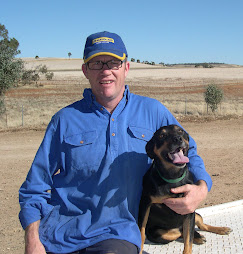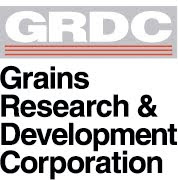Nikki, Juca & Richard Atop The Effluent Screen
The size of farm is 1500 ha half of which is continuously cropped for grain production and the other half of the farm is utilized to produce feed (mainly silage) for the dairy enterprise. As well as the arable cropping there is a 480 cow dairy, and a 380 sow piggery. All of the dairy and pig effluent is firstly passed through a shit screen where the solids are removed and carted off to a compost pad out in a paddock. In this effluent there is 5% solids and 95% water. The liquid effluent goes through 2 bio digesters . it is 60 -70000 litres of liquid manure and this produces 1500 – 2000 m3 of methane. This methane is used to dry grain and to heat the piggery sheds. Once the liquid waste has passed through the bio digesters it is used for irrigation on the feed production side of the cropping property.
The composted manure is turned on average every 3rd day in winter and daily in the warmer weather. It takes a total of 40 days composting until it is ready to be spread out in the paddocks at a rate of 5-10 t / ha based on soil testing. There can be considerable loss of Nitrogen but to stop this you can apply gypsum at 5% or 50kg/t of raw manure. The compost has a pH of 5.5 -5.8 and as well as giving good N in the form of organic matter it adds .6% phosphorous to the soil as well. When this compost is applied at 5t/ha the soil receives 30 kg of elemental P. Because of the pH of the compost and his production model, lime is added at a rate of .5t -1t/ha every second year.
The Effluent Treatment & Bio-digester Bags
The crops that he grows are corn, barley, soy beans, black oats and millet. These are used as either grain, silage or cover crops. Richard cuts his corn for silage and he averages 12t dm/ha at 12% protein and does a lot of soy bean silage at 6t dm/ha and 24% protein. When these two silages are mixed with some grain and additives they make a very good total mix ration. When he uses a cover crop he seeds straight into the crop which has been given an application of Glyphosate. This was very intersting to see.Seeding Barley Straight Into Standing Japanese Millet
Whilst we have been in Brazil we have seen a lot of successful co-operatives and I quizzed Richard on his thoughts on co-ops. His plain answer was that they make him money when selling and save him money when buying inputs. So the farmers really benefit greatly from them. The average size of a co-op farmer is 200ha so Richard farms one of the larger areas in his co-op. A number of years ago 3 co-operatives formed the ABC foundation to run the farmers own trials. Each co-op has two farms in their areas that they use for farmer owned and directed research of 45 ha each. To be involved in the foundation it costs farmers R$12.25/ha of trial site so approx R$3300/year. There are 2000 co-op members so the foundation has plenty of funds to run the trials. Richard, Slim Guy in Blue and Juca Discussing Zero-Till
I asked Richard what problems if any had he encountered when making the shift from conventional till to no till and his major problems were the quality of the machines for cutting through residue, poor herbicide availability at the time and it took about 4 years for some of the nitrogen stored in the residue to become available so during that time he had to increase his N fertiliser rates. After corn he found the remaining residue given the high yields that he was achieving were hard to cut through for any machine. So straight after harvest he utilises a homemade knife roller made out of old discs.
Disc Cutter Bar









No comments:
Post a Comment